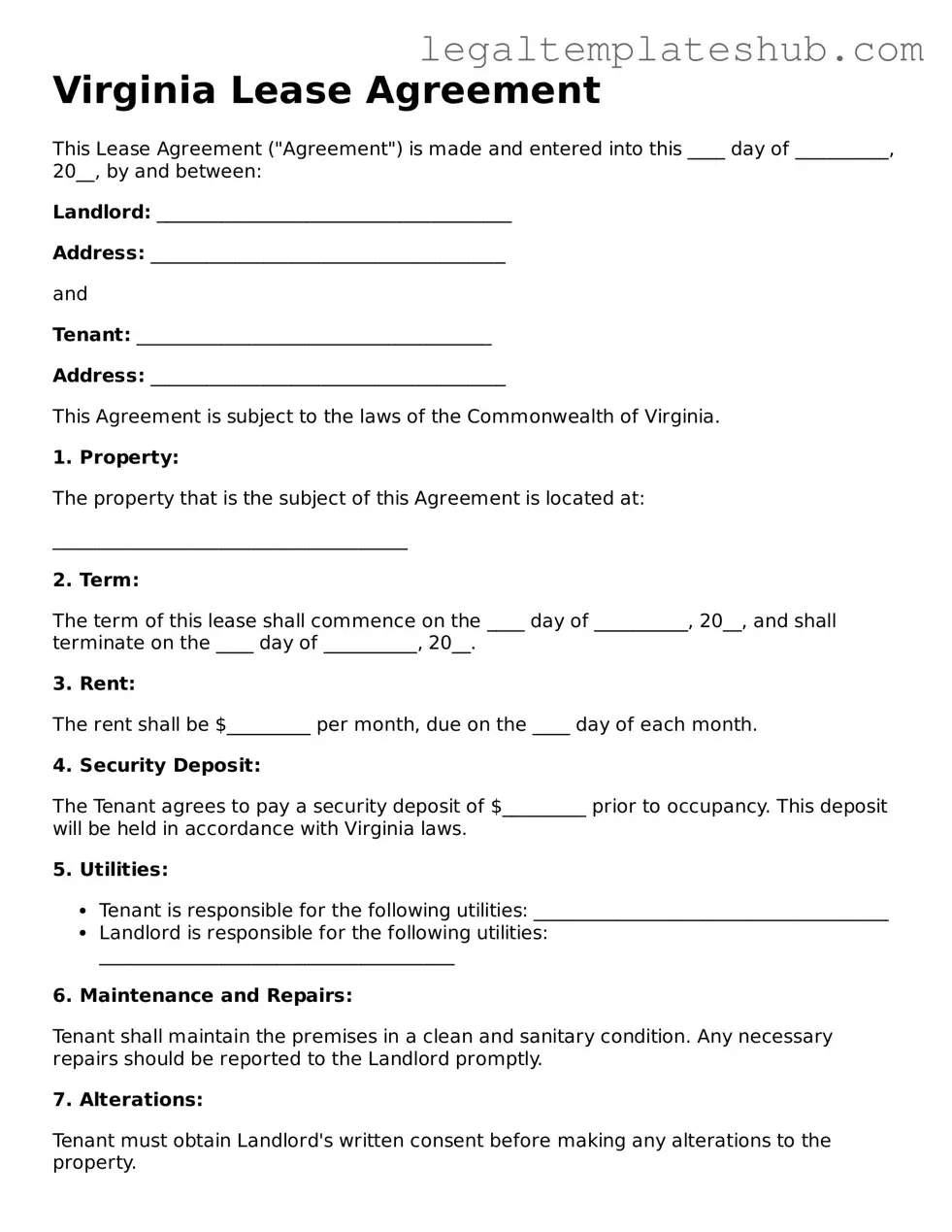Printable Lease Agreement Document for Virginia
The Virginia Lease Agreement form is a legally binding document that outlines the terms and conditions between a landlord and a tenant for renting residential property in Virginia. This form serves to protect the rights of both parties while ensuring clarity regarding rental obligations. To proceed with your leasing needs, consider filling out the form by clicking the button below.
Access Editor
